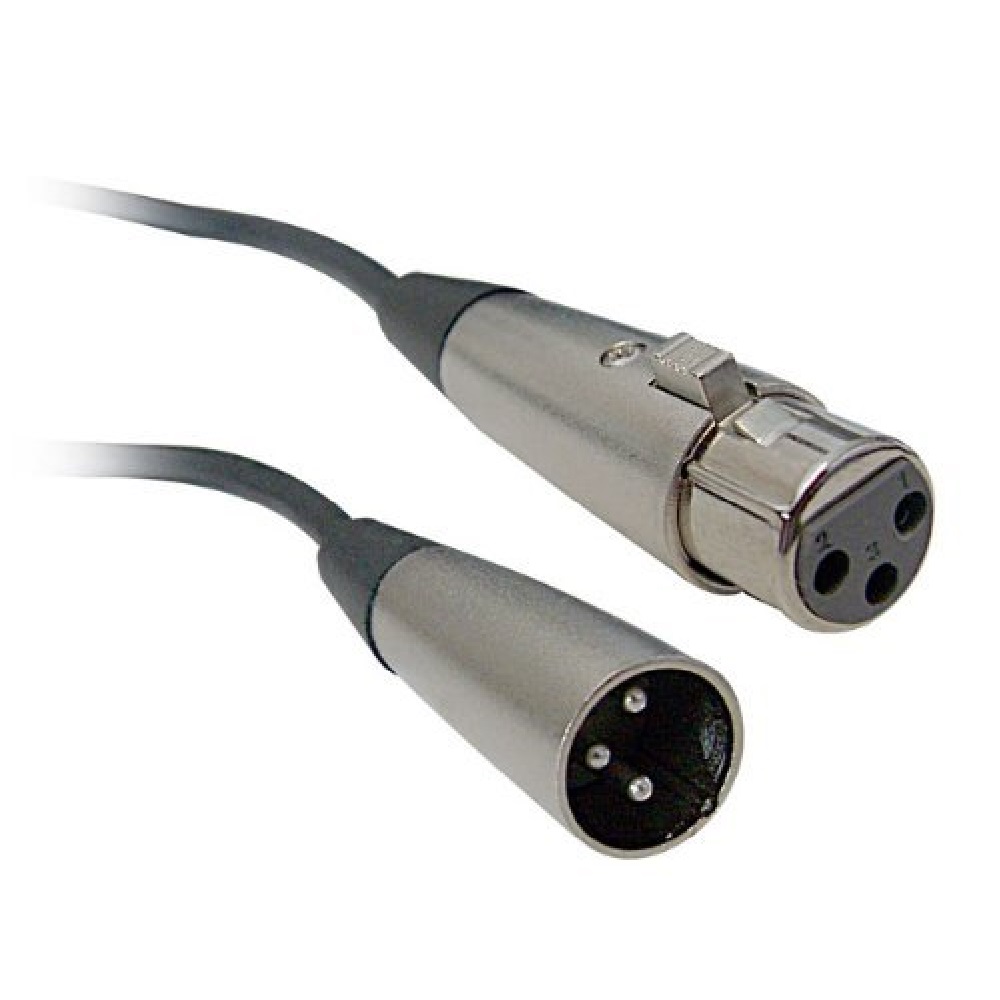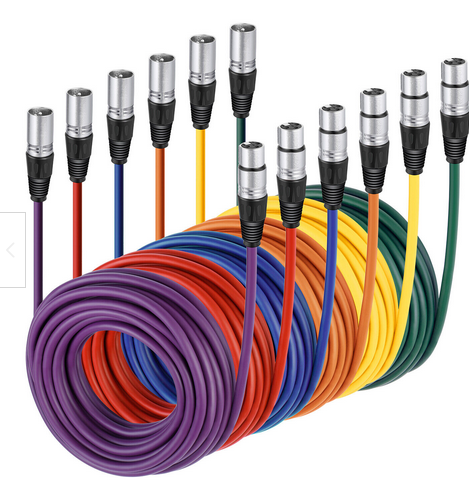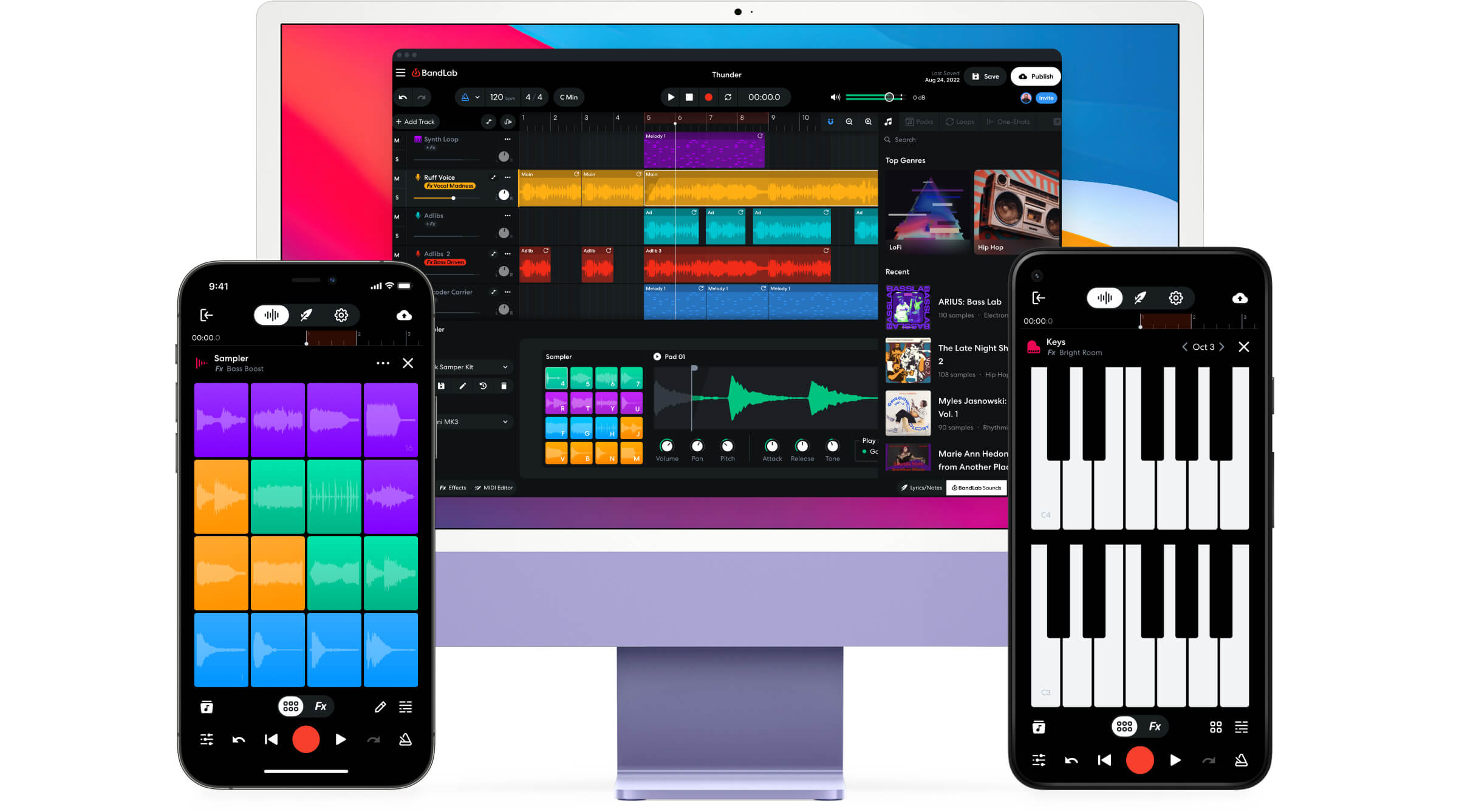Review: Standard XLR Male To Female Microphone Cable
If you’re a musician, audio engineer, or work in the entertainment industry, you’ve probably come across the term XLR cable.
XLR cables are essential pieces of equipment for connecting microphones, mixers, and other audio devices. In this article, we’ll explore what XLR cables are, how they work, and why they are important.
Learning About Digital Audio Work Stations
What is an XLR Cable?
XLR stands for “eXternal Live Radio.” XLR cables are commonly used for balanced audio connections.
These cables are known for their ability to deliver high-quality sound over long distances without noise interference. XLR cables are made up of three pins that lock into place when inserted into an XLR jack.
XLR cables are used to connect a wide range of audio devices such as microphones, mixers, amplifiers, and speakers. These cables are designed to deliver high-quality audio signals with low noise interference.
Best Digital Weighted Keys For Beginners
How Does An XLR Cable Work?
XLR cables work by transmitting audio signals through balanced connections. In a balanced connection, there are two signals that are transmitted in opposite phases.
One signal is positive, and the other is negative. These signals cancel out any noise that may be picked up along the way, resulting in a cleaner audio signal.
The XLR cable’s three pins work in the following way:
- Pin 1: This is the ground pin. It is connected to the metal casing of the XLR jack and provides a path for any unwanted electrical signals to be diverted away from the audio signal.
- Pin 2: This is the positive signal pin. It carries the audio signal’s positive phase.
- Pin 3: This is the negative signal pin. It carries the audio signal’s negative phase.
When the XLR cable is plugged into an XLR jack, the three pins make contact with their respective terminals, completing the circuit. The positive and negative signals are transmitted through the cable, while the ground pin diverts any unwanted electrical signals.
How To Develop Your Piano Playing Skills

Steps To Getting Music From Soundcloud
Why Are XLR Cables Important?
XLR cables are important because they provide high-quality audio signals with low noise interference. In addition, XLR cables are designed to work over long distances without losing signal quality. This makes them ideal for use in live sound applications where long cable runs are necessary.
XLR cables are also important because they are rugged and durable. They are designed to withstand the rigors of live performances, touring, and studio use. XLR cables are made with high-quality materials that ensure they can withstand frequent use and abuse.
In addition, XLR cables are easy to use. They feature a locking mechanism that ensures they don’t come loose during use. This is especially important in live sound applications where cables can get accidentally pulled out.
3 Reasons Why Rappers Have Teardrop Tattoos
Do High-Quality XLR Cables Make A Difference?
Yes, high-quality XLR cables can make a difference in certain audio applications. XLR cables are commonly used for balanced audio connections, particularly in professional audio settings such as recording studios, live sound reinforcement, and professional performances.
The quality of an XLR cable can impact the overall audio signal transmission.
Here are a few factors where high-quality XLR cables can make a difference:
- Signal Integrity: High-quality cables are designed to minimize signal loss, interference, and noise. They use better shielding and superior conductor materials, which can result in cleaner and more accurate audio transmission.
- Durability: Premium XLR cables are often constructed with better materials, such as robust connectors, high-grade copper conductors, and reinforced shielding. This enhances their durability, reducing the likelihood of cable failures or intermittent connections over time.
- Interference Rejection: High-quality XLR cables typically incorporate superior shielding, such as braided or foil shielding, which helps reject external electromagnetic interference (EMI) and radio frequency interference (RFI). This can result in a cleaner audio signal, particularly in environments with high EMI/RFI exposure.
- Longer Cable Runs: When running XLR cables over longer distances, high-quality cables can help maintain the integrity of the audio signal better than lower-quality cables. They have lower resistance and capacitance, minimizing signal loss and degradation over extended cable runs.
However, it’s worth noting that the impact of high-quality XLR cables may be more noticeable in professional audio applications or when working with high-end audio equipment.
For everyday consumer use or shorter cable runs, the difference may be less noticeable. Ultimately, it’s essential to consider the specific requirements of your setup and balance them with your budget when selecting XLR cables.
Why Is There So Much Profanity In Rap Music?

This Is Why Some Rap Artists Wear Gold Teeth
Are XLR Microphone Cables Balanced?
Yes, XLR microphone cables are designed to carry balanced audio signals. The XLR connector is commonly used for professional audio applications, including microphones, because of its ability to provide balanced connections.
A balanced audio signal consists of two identical copies of the audio waveform, known as the hot and cold signals. These two signals are of equal amplitude but have opposite polarity.
As mentioned earlier the XLR connector has three pins: Pin 1 (ground), Pin 2 (hot or positive), and Pin 3 (cold or negative).
In a balanced XLR microphone cable, the hot signal is carried on Pin 2, while the cold signal is carried on Pin 3. The ground connection is made through Pin 1.
The balanced configuration helps in canceling out any external electromagnetic interference (EMI) or noise that may be picked up by the cable.
At the receiving end, the balanced audio signal is processed by equipment designed to extract the difference between the hot and cold signals, known as the differential signal. This differential signal effectively cancels out any noise that was picked up along the cable, resulting in a cleaner audio signal.
Balanced connections offer several benefits, including improved signal quality, increased resistance to noise and interference, and the ability to transmit audio over longer distances without significant degradation.
This is why XLR microphone cables are widely used in professional audio environments.
Is Having The Same Rap Name As Another Rapper Illegal?
What Is A Female XLR Cable?
A female XLR cable refers to an XLR cable that has a female XLR connector on one end. The XLR connector is a three-pin audio connector commonly used in professional audio and recording equipment.
It is named after its inventor, James H. Cannon, and the Latch/Release mechanism it employs.
A female XLR cable is used to connect devices or equipment with male XLR connectors, such as microphones, mixing consoles, audio interfaces, amplifiers, and other audio equipment.
The female XLR connector has a hollow, cylindrical shape with three holes or receptacles to accept the male XLR pins.
When connecting a female XLR cable, the female XLR connector is plugged into the male XLR connector, creating a secure and reliable audio connection. The locking mechanism of the XLR connector ensures a firm connection that is less prone to accidental disconnection.
It’s worth noting that XLR cables can come in various lengths and with different cable types (such as balanced or unbalanced), but the term “female XLR cable” specifically refers to the cable with a female XLR connector on one end.
The Salary Of An Indie Rap Artist
What Is A Male-To-Male XLR Cable?
A male-to-male XLR cable is a type of audio cable that is used to connect two devices with XLR connectors of the male type.
It’s important to note that in some cases, the term “male-to-male XLR cable” may refer to a cable with male XLR connectors on both ends but wired in an unbalanced configuration.
Unbalanced cables are more susceptible to noise and interference over longer distances compared to balanced cables. However, the context in which the term is used would determine the specific configuration of the cable.
What Is A Male To Female XLR Cable?
A male-to-female XLR cable is an audio cable that is used to connect a device with a male XLR connector to a device with a female XLR connector.
The XLR connector is a widely used connector in professional audio equipment, and it is commonly found on microphones, mixers, audio interfaces, and other audio devices.
The male XLR connector features three prongs or pins within a circular metal housing, while the female XLR connector has three corresponding holes to receive those prongs.
The male-to-female XLR cable has a male XLR connector on one end and a female XLR connector on the other, allowing you to connect devices with different XLR connector genders.
How Musicians Have Success On Social Media
What Company Makes The Best XLR Cables?
There are several companies that are known for producing high-quality XLR cables. The perception of which company makes the best XLR cables can vary based on personal preferences and specific needs.
Here are a few well-regarded companies known for manufacturing reliable XLR cables:
Mogami
Mogami: Mogami is a renowned brand known for its high-quality audio cables. They offer a wide range of XLR cables that are trusted by professionals in the music and audio industry.
Canare:
Canare is another respected brand that specializes in professional audio and video cables. They have a reputation for producing durable and reliable XLR cables that deliver excellent signal transmission.
Neutrik:
While Neutrik is primarily known for its connectors, they also produce high-quality XLR cables. Their cables are often praised for their robust construction and reliable performance.
Belden:
Belden is a well-established company that manufactures various types of cables, including XLR cables. They are known for their attention to detail and producing cables that meet stringent quality standards.
Hosa:
Hosa is a brand that offers a range of affordable audio cables, including XLR cables. While they may not be as high-end as some of the other brands mentioned, Hosa cables are often considered reliable and offer good value for the price.

Does It Matter What Type Of XLR Cable You Get?
Yes, it does matter what type of XLR cable you get, as there are different factors to consider based on your specific needs and the application you intend to use it for. Here are a few important considerations when choosing an XLR cable:
- Cable Length: The length of the cable is an important factor to consider. Ensure that the cable is long enough to reach between your audio devices without excessive slack, but not so long that it introduces signal degradation or interference. Longer cable lengths can result in more signal loss, especially if the cable is of lower quality.
- Cable Quality: The quality of the cable can have a significant impact on the audio signal. Higher-quality cables are built with better shielding, conductors, and connectors, which can result in improved signal integrity and reduced interference. Look for cables from reputable manufacturers that are designed for professional audio applications.
- Balanced vs. Unbalanced: XLR cables can be either balanced or unbalanced. Balanced cables use three conductors (hot, cold, and ground) and are designed to reduce noise and interference, making them suitable for long cable runs and professional audio applications. Unbalanced cables use only two conductors (signal and ground) and are more susceptible to noise and interference. Choose a balanced XLR cable whenever possible for better audio quality.
- Connector Quality: The connectors on the XLR cable should be well-constructed and reliable. Look for connectors from reputable brands known for their durability and secure connections, as loose or faulty connectors can introduce signal issues.
- Specific Application: Consider the specific application for which you are using the XLR cable. Different applications may require different features or specifications. For example, a microphone cable may require additional shielding to minimize interference, while a line-level audio cable may have different impedance requirements.
Ultimately, it’s important to choose an XLR cable that meets your specific requirements and is suited for your intended application.
Consider the factors mentioned above, read product reviews, and consult with audio professionals if necessary to make an informed decision.



